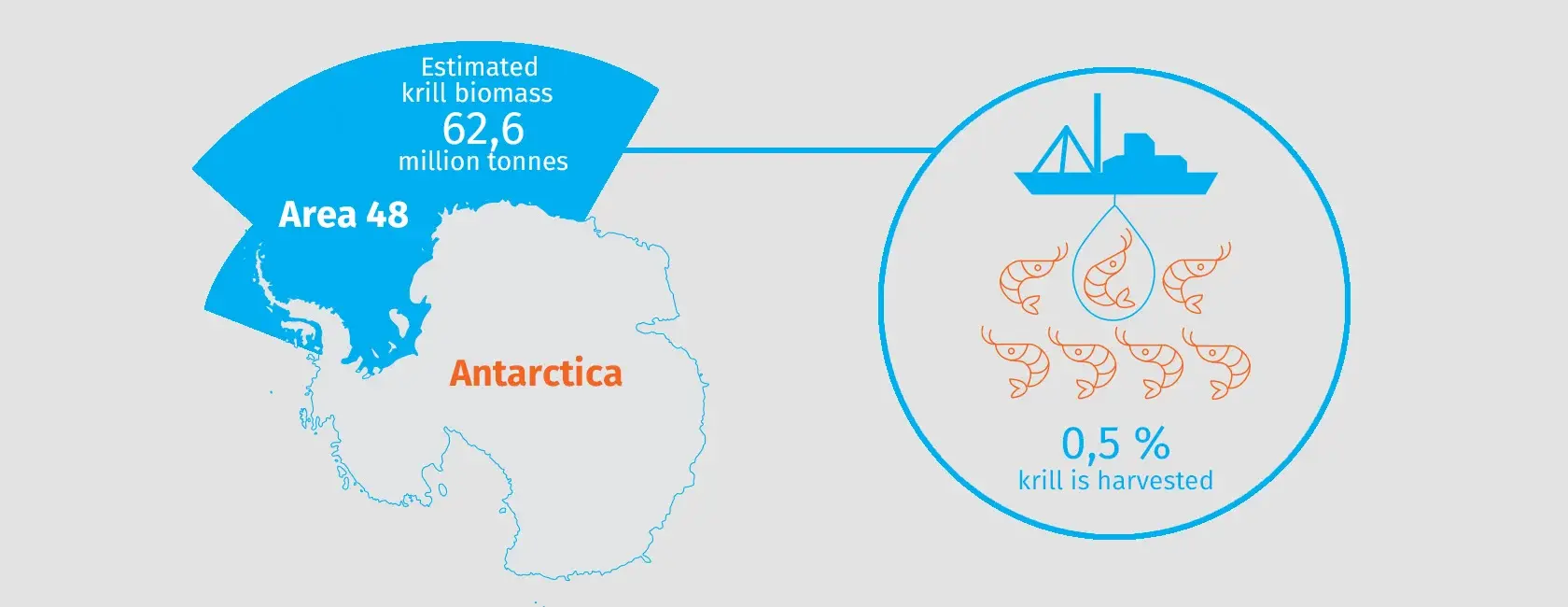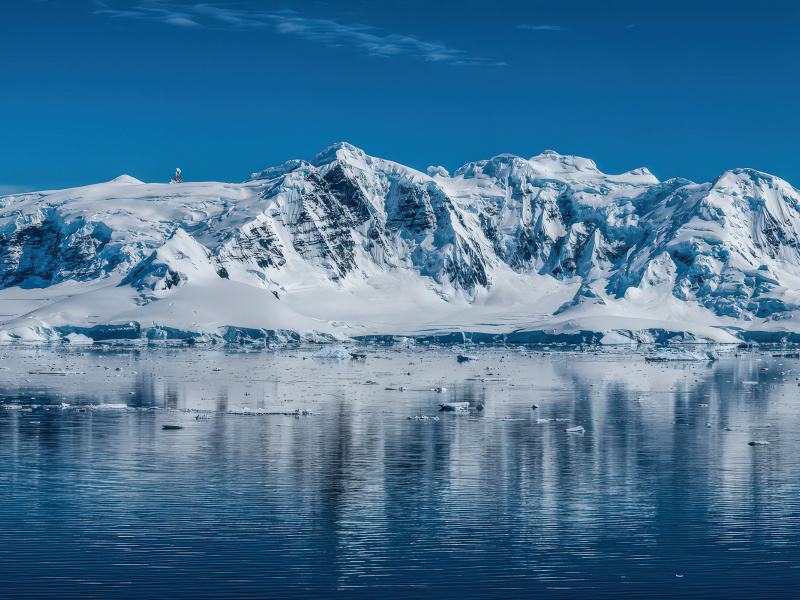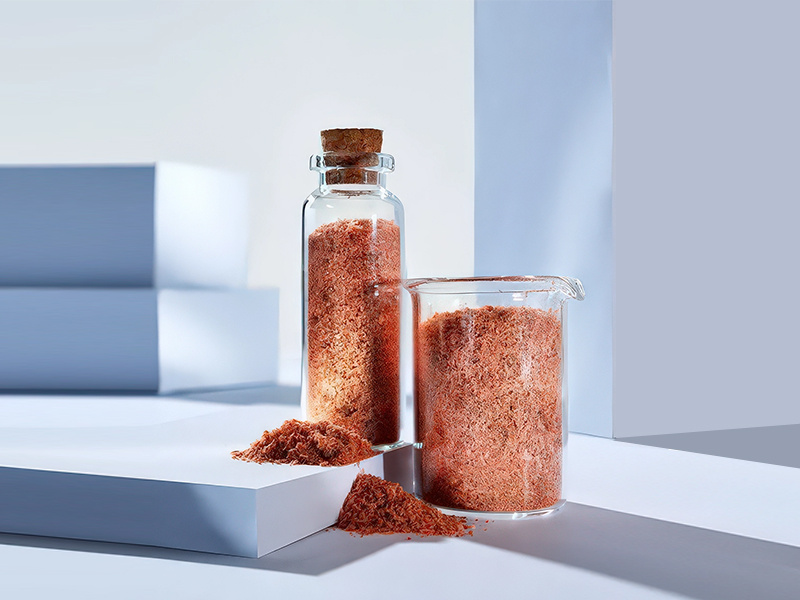Antarctic krill - small and powerful
Euphausia superba
Krill meal is produced from Antarctic krill (Euphausia superba) found in the Southern Ocean around the frozen continent. Krill survive their first winter living in the water column on the underside of sea ice where they harvest the microscopic algae that grows there. Adult krill are shrimp-like in appearance, but, in contrast to their bottom-dwelling crustacean relatives, the shrimp, krill inhabit the open ocean. Here, krill aggregate in swarms of up to twenty kilometers in length where they feed on microscopic algae during the day and migrate to greater depth during the night as to evade predators.
Krill appear transparent with some red and green coloration. The red is caused by the carotenoid pigment astaxanthin embedded in chromatophores. The crustacean can change the size and intensity of the red spots in order to balance the need of UV protection closer to the ocean surface with higher transparency for camouflage. The green is observed in their digestive system and underscores their reliance on an algal diet. In fact, krill can consume up to 20% of their own body weight per day but can also survive for up to 200 days without food. During the Antarctic summers, when photosynthetic algae bloom, the sheer abundance of krill makes it one of the largest protein sources on Earth - a source eagerly sought by fish, whales, and men alike.
This special crustacean holds a vital position in the marine food chain.
A healthy biomass
Antarctic krill is exclusively caught in area 48 off the Antarctic peninsula and limited to 1% of the total estimated biomass in that area. Over the last 3-4 years, the total catch ranged between 230 000 to 390 000 tonnes annually, only representing approximately 0.3% of the unexploited biomass. And while annual variability in sea ice cover causes variation in recruitment, the estimated biomass of krill has increased from 60.3 million tonnes measured in 2000 to 62.6 in 2018/19 according to findings from the Commission for Conservation of Antarctic Marine Living Resources (CCAMLR). The conservative catch quota and trends in biomass ensure that krill stocks count amongst the best managed and underutilised marine resources to date.

Phospholipids
The magic of krill
Supplementation with krill meal has been known to improve aquaculture feed quality since well over a decade. Krill is a sustainable source of protein, omega-3 phospholipids, feed attractants and astaxanthin. Omega-3 fatty acids can be bound together either as triglycerides or phospholipids.
In krill, most of the omega-3s are in phospholipid form, whereas in fish oil they mostly are in triglyceride form. The phospholipid form is easily taken up by the organs, giving fish more omega-3s in their cell membranes, resulting in improved health and fillet quality. When omega-3s are in triglyceride form they first must be converted to the phospholipid form, before they can be taken up by cell membranes.
See video to the left for illustration.
RELATED ARTICLES
Read more about krill, sustainability and product information in selected articles below
.jpg)
A high quality ingredient for fish and shrimp
Continued growth of aquaculture and the change from small-scale to high intensity, industrial farming has increased the need for sustainable protein sources in both shrimp and fish feeds.

Antarctic krill - A sustainable protein source for fish and shrimp
Krill is an important source of protein, omega-3 fatty acids and feed attractants which makes it a great ingredient in feeds for fish and shrimp.

How we're making QRILL Aqua
Krill is harvested with our ECO-Harvesting technology that protects the environment from by-catch, and is processed on-board our vessels to ensure best quality for our customers.
